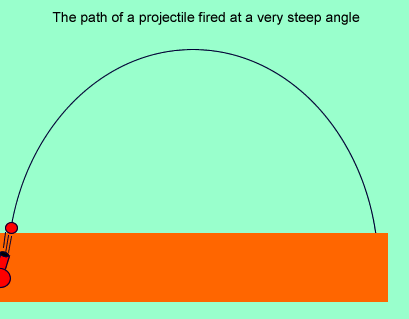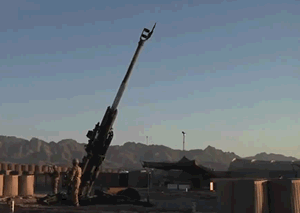Projectile motion


Look at the animation above.
A projectile is shot into the air. Its path is determined by the horizontal
and vertical components of motion. Notice how the resultant velocity vector
is formed by the addition of the horizontal and vertical velocity vectors.
The vertical velocity decreases due to gravity while the horizontal velocity
remains constant, assuming no air resistance. Notice at the top of the
path the vertical velocity shrinks to zero so the resultant velocity of
the projectile is the same as the horizontal velocity. Everywhere else
along the projectile's path the resultant velocity vector is greater than
either the horizontal or vertical velocity vectors.
Lets go straight into the exercises and combine vectors with projectile motion. Trigonometry is used in solving problems. For example consider the prolem below.
Refresh yourself with straight line motion formulae.
Consider a shell fired from a cannon at an angle of 70o to the horizontal. If the shell leaves the cannon at a speed of 240 m/s find:
a) The vertical speed of the shell.
b) The horizontal speed of the shell.
Solution
c) How long does it take for the shell to reach its maximum height?
Solution
d) How long does the shell stay in flight?
e) What is the maximum distance the shell travels horizontally?
Solution
